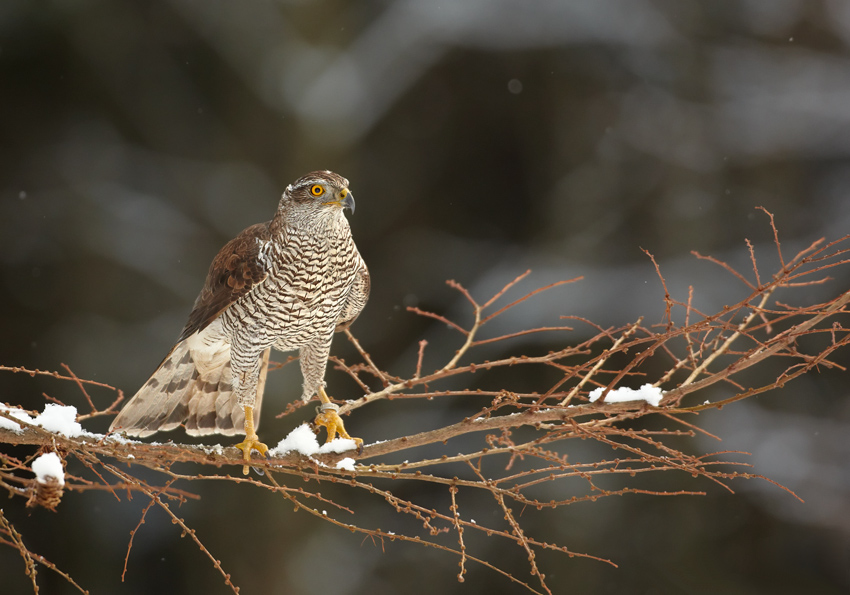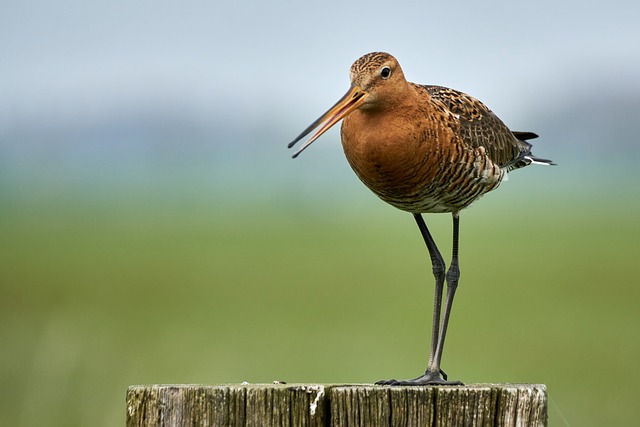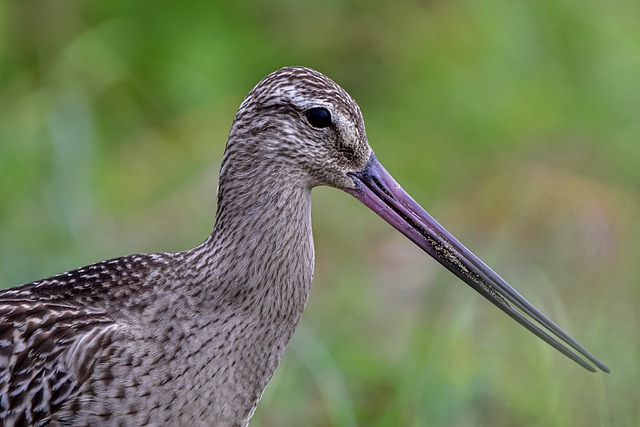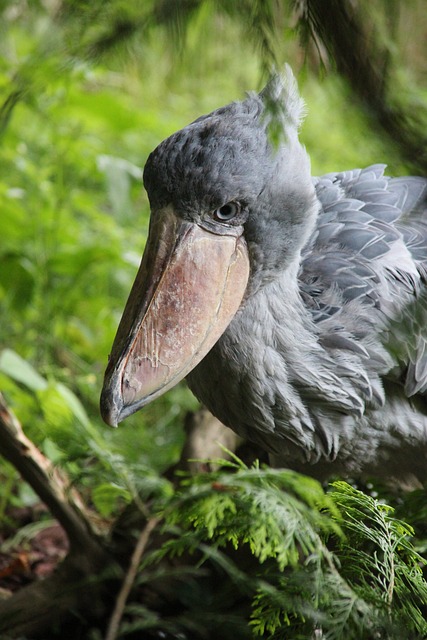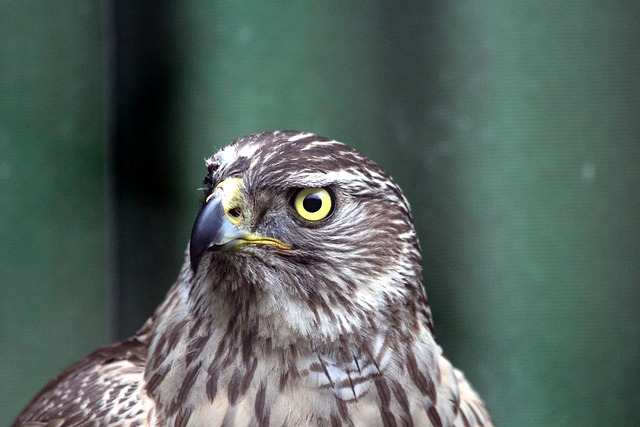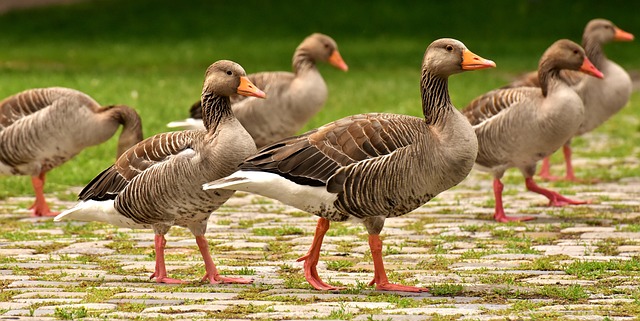The common eider is a remarkable species of sea duck found in the northern Atlantic Ocean. This species is prized for its unique beauty and admired for its toughness in the face of extreme environments and challenging conditions. The common eider is also important to humans, as its feathers have been used for centuries for insulation, and its meat is a source of nutrition for many.
In this article, we will explore all the things you should know about the common eider, including its physical characteristics, habitat, breeding habits, diet, predators and conservation efforts.
Introduction
The common eider (Somateria mollissima) belongs to the family Anatidae and is the heaviest of all North American ducks. It is large in size and has a wingspan of up to 55 inches. The adult male has a black-and-white head pattern with a white chest and back. Its tail is black and its bill is a yellowish-green. The adult female is a mottled brown color with brownish-black wings and a brown bill. Both sexes have yellow eyes and their webbed feet are yellowish-brown.
The common eider is an ocean-dwelling species that breeds along the Atlantic and Arctic coasts of North America, from Greenland to Newfoundland in the east and from Alaska to Labrador in the west. It is also found in Europe, from Iceland to the White Sea in the north and the British Isles in the south. The common eider prefers to breed on rocky islands and coastal cliffs, but can also be found in estuaries and mudflats.
The common eider is an important species to both humans and nature. It is a key species for the predator-prey balance in the Arctic and subarctic ecosystems, and its feathers have been used for centuries for insulation and clothing. The common eider also serves as a food source for many people in the North Atlantic and Arctic regions. The species is also the national bird of Greenland and is a beloved symbol of the northern countries around the world.
Habitat
The common eider is a species of sea duck that is found in the colder northern hemisphere. Its habitat ranges from the coasts of northern Europe, across the Arctic and into North America. The common eider prefers to inhabit cold, coastal regions near rocky shores, sea cliffs, and intertidal mudflats. The species is also found in estuaries, fresh-water lakes and rivers, as well as near inlets, bays, and harbors.
Due to its preference of colder climates, the common eider is rarely found in large numbers further south than the British Isles. The species prefers areas with shallow, soft-bottomed waters with plenty of vegetation and algae which provides a source of food. Ideal habitats for the common eider include sheltered coves, lagoons, and inlets that are easily accessible for the species while providing plenty of food and safety from predation.
Common eiders are highly migratory and can cover long distances across the ocean. In Europe, the species migrates south for the winter, while in North America they migrate north and east in the spring. During the summer, common eiders will return to their breeding grounds in the Arctic, and occasionally in Europe.
The common eider's habitat is becoming increasingly threatened due to the effects of climate change. The species is particularly at risk in the Arctic, where sea ice is melting at a rapid rate. As the ice melts, the common eider is forced to find new habitats in order to survive. Additionally, the species faces threats from human development, which is causing a decrease in suitable habitats for the species.
The common eider is a species that is highly dependent on its habitat for survival. It is essential that efforts are made to protect the species and its habitat in order to ensure the future of the species. Conservation efforts must be made to reduce the effects of human development and climate change on the common eider and its habitat.
Physical Characteristics
The Common Eider is a type of sea duck that is mostly found in the Northern Hemisphere. It is a large, colorful duck with a distinctive appearance that makes it easy to identify.
The average Common Eider is about 24-27 inches in length and has an average wingspan of 38-42 inches. Its body is plump and its head is slightly larger than its body. Its bill is long and pointed at the end, with an orange-yellow coloration. Its legs and feet are also orange-yellow in color.
The male Common Eider is a striking bird with a black head, white neck, and black and white wings. Its back is dark brown and its chest is white. Its belly and undertail are grey and its wings have white stripes. The female Common Eider is a mottled gray-brown color with a darker head and a white chin.
The Common Eider is well-known for its unique color patterns that vary depending on its age. Young birds have a gray-brown coloration with a light gray head. As they mature they become darker and their feathers become more iridescent. Adults have a distinctive pattern of black, white, and green feathers.
The Common Eider is also distinguished by its behavior. It is a gregarious bird that prefers to flock in large numbers and can often be seen preening and bathing. It is also a strong swimmer and can dive down to depths of up to 50 feet in search of food.
Breeding
The Common Eider breeds in the northern hemisphere during springtime. During this time, the males arrive at the breeding site and establish territories. The males display very dynamic and aggressive behavior during this process, using a variety of approaches to attract the female.
Once a pair is formed, the female will begin to build a nest, usually on the ground near the coastal edge. Both the male and female take part in the nest-building process, using grass, moss, and other vegetation to form the nest. The female will lay several eggs over a period of time, with the male staying close by to help defend the nest.
The eggs usually hatch after three to four weeks, at which point the chicks will be able to survive on their own. During the hatching process, both the male and female take part in protecting the chicks, defending them from predators and helping them to learn how to fly.
The chicks will begin to fly at around five weeks old, and at this point they will start to hunt for food. Both the male and female will continue to care for the chicks until they are ready to leave the nest, which usually occurs when they reach six weeks of age.
The Common Eider produces two broods per year, with the second brood occurring a few weeks after the first. The young from both broods will gather together in large groups and migrate south, usually reaching their wintering grounds in late autumn. The birds will then return to their breeding grounds the following spring.
Diet
The Common Eider is an omnivorous bird that feeds on both plants and animals. They feed mainly on plankton, small crustaceans, mollusks, fish, marine worms, and aquatic insects. These are found in shallow areas or near the shoreline. The Common Eider will also eat mussels, snails, clams, and other mollusks.
Common Eiders hunt their prey using a few different strategies. They are often seen foraging in shallow water, diving down to find food in the sediment. They also use their feet to stir up the bottom and expose prey. Another strategy the Common Eider uses is to fly low over the water and scoop up its food with its bill.
Common Eiders have a broad diet that includes a variety of prey. They feed on small fish such as capelin, sandlance, and herring. They also feed on crustaceans like shrimp, crabs, and amphipods. They eat mollusks like clams, mussels, and snails. Common Eiders will also consume aquatic insects, worms, and algae.
Common Eiders tend to eat more in the summer months when food sources are more abundant. During the winter, they tend to feed less and consume more energy reserves. This helps them to survive the cold temperatures.
Common Eiders are also known to scavenge for food. They will feed on the carcasses of aquatic mammals such as seals and whales. This helps to reduce the amount of waste in the ocean.
The Common Eider is an important part of the marine food web. By feeding on a variety of prey, they help maintain the balance of the ocean ecosystem.
Conservation
Humans have had a significant impact on the habitat of the Common Eider, as the species is heavily affected by climate change, pollution, and other human-driven activities. This has had a negative effect on their population, as Common Eiders are slow to reproduce and their young are particularly vulnerable to changes in their environment. Despite this, the species is listed as “Least Concern” on the IUCN Red List, though conservation efforts are still needed to ensure their population remains stable.
In order to protect the species, there needs to be efforts to reduce harmful human activities that contribute to climate change, such as the burning of fossil fuels and deforestation. The Common Eider’s habitat also needs to be protected from human development, such as oil and gas exploration, shipping, and fishing. This can be done by creating protected areas such as Marine Protected Areas (MPAs) or by limiting activities within the Common Eider’s range.
Video
&n

